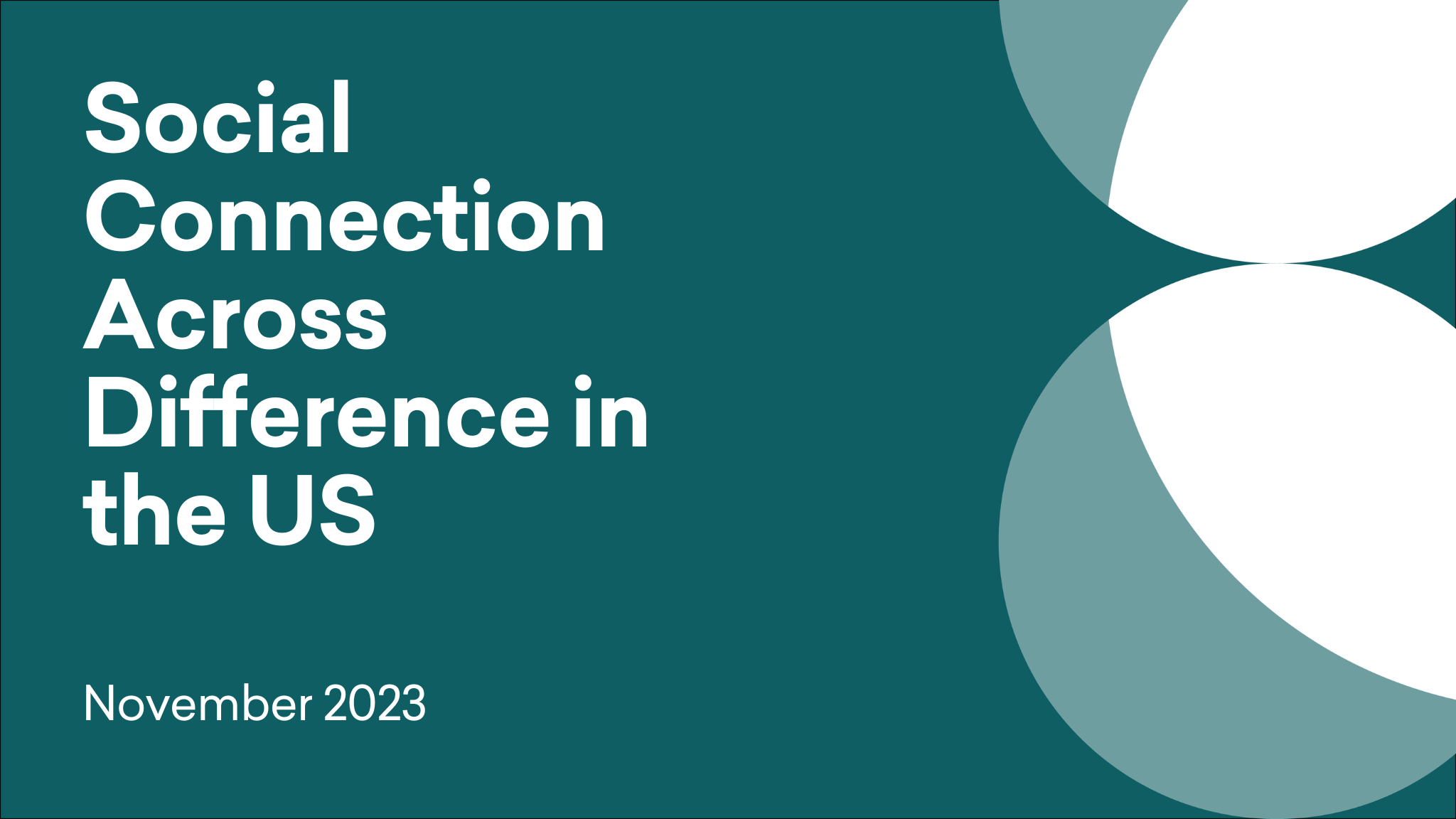
29 November 2023
December 6, 2023
Social Connection
In partnership with the SNF Agora Institute at Johns Hopkins University, Searching for a New Paradigm: Collective Settings, makes the case for reinvigorating civic infrastructure as a complement to existing institutional reform and bridge-building efforts.
The report emerged from several years’ worth of convenings, research, and analysis of existing paradigms for how to strengthen democracy. As part of the project, scholar Isak Tranvik produced an essay that lays out the important features that healthy collective settings demonstrate.
Similarly, for this project, scholar Emily B. Campbell conducted a series of case studies to describe how collective settings play out relative to democracy paradigms rooted at the behavioral or institutional level. They feature:
Emily’s work demonstrates the ways these three paradigms—behavioral, collective settings, and institutional—complement one another while pursuing distinct strategies and approaches.
The intent of the report is not to highlight flaws in existing efforts to improve democracy, but to show that much greater attention needs to be placed on collective settings.
Collective settings, we argue, are where Americans build the skills, habits, and dispositions necessary to successfully navigate an unknowable future together, in ways that preserve and strengthen democratic norms and institutions.
“By investing in collective settings, we hope to develop the muscles for democracy that people and communities will need to seek, identify, and implement shared solutions that do not accept the world as it is but instead create the world they need.”
Included in the report are several recommendations for various stakeholders:
For Researchers: We need much more (widely disseminated) research to help us better understand multiple themes.
For Philanthropy: Collective settings need both funding and philanthropic organizing.
For Civil Society, Business, and Government: Civil society leaders can cultivate collective settings in their work and communities. Likewise, the state and markets each play a crucial role in creating settings (like the workplace) where people interact with each other. All three sectors impact the design and distribution of settings.
Explore the depth of our research at your fingertips. Get the complete insights by downloading the full report today.
What unites and divides Americans today? This newsletter takes a closer look at issues pressing on America’s social and political fabric and provides recommendations for how to strengthen ties to keep us bound together.